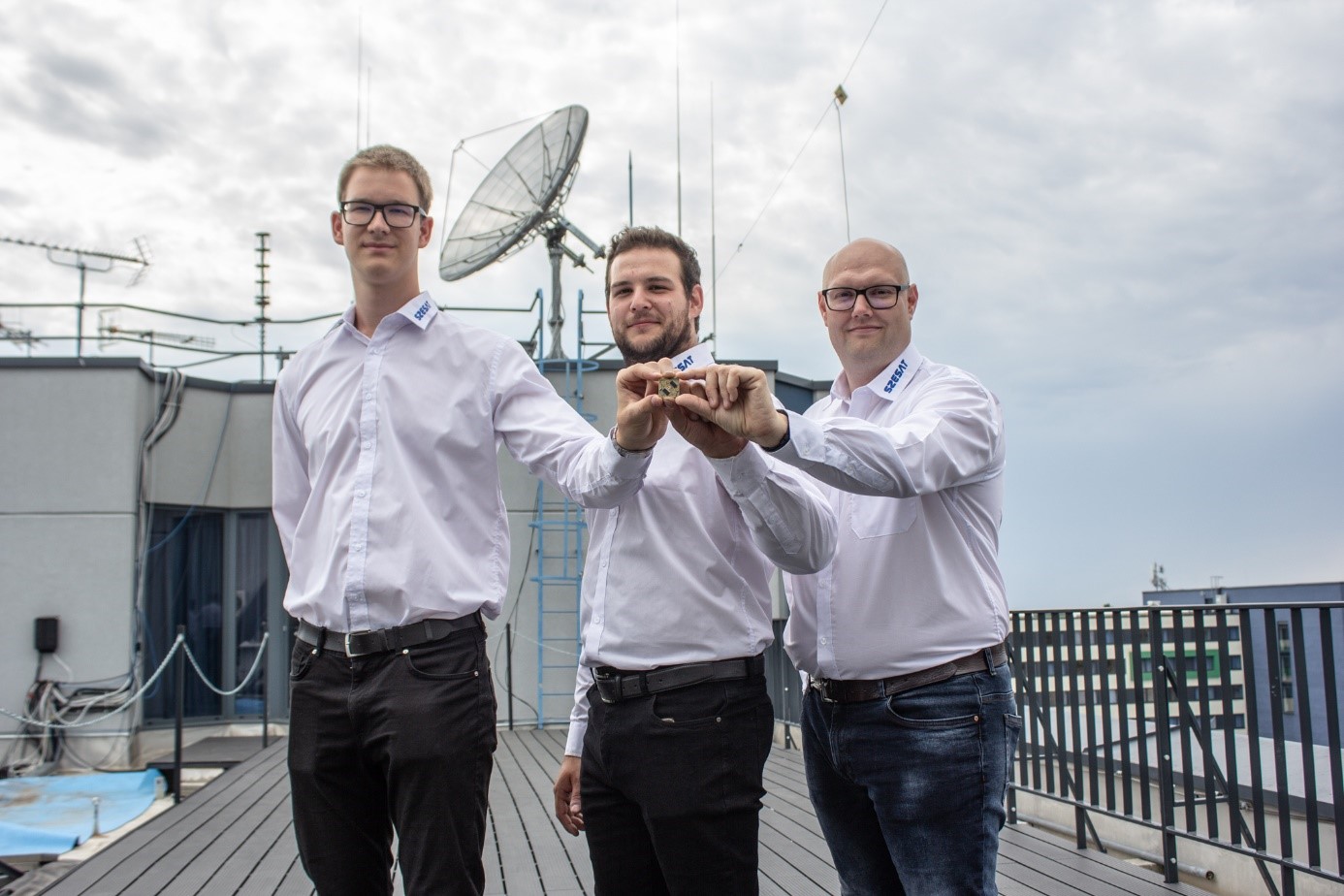Communication module developed by students of SZE transmits signals from space
The SZE-SAT team of Széchenyi István University has developed a space device that is now orbiting in space and transmitting pre-programmed messages. The students used an antenna installed on the roof of the university's campus in Győr to capture the MRC 100 satellite, which also houses the university's communication panel.
The SZE-SAT section of the Jedlik Ányos Specialised College of Mechanical and Electrical Engineering at Széchenyi István University undertook the task of creating a 30 by 30 by 3 millimetre panel to transmit short text messages to Earth in order to improve data communication within satellites. On 12 June, the MRC 100 satellite of the Budapest University of Technology and Economics (BME) was successfully launched into space, carrying the communication module developed by the University of Győr. The device launched on Elon Musk's SpaceX Falcon 9 rocket, was placed into orbit at 15:11 on 22 June. The batteries needed some time to recharge from the satellite's solar panels, after which it was possible to power up.
 The panel, developed by students at Széchenyi István University, is slightly larger than a 100 forint, but smaller than a biscuit. The biscuit next to the module used to be the "pilot" of the SZE-SAT team's meteorological balloon, which reached an altitude of 32 kilometres. (Photo: Márton Horváth)
The panel, developed by students at Széchenyi István University, is slightly larger than a 100 forint, but smaller than a biscuit. The biscuit next to the module used to be the "pilot" of the SZE-SAT team's meteorological balloon, which reached an altitude of 32 kilometres. (Photo: Márton Horváth)
"The SZE-SAT student team of Széchenyi István University has done a tremendous job over the past period, first by creating and testing the tiny communication module developed for the satellite, weighing only 2.1 grams, and then by setting up the antennas on the roof of the Győr campus. These allow us to track the satellite and receive messages that we have pre-loaded ourselves. I am happy to report that the device we developed in the project, which is a collaboration between BME, Széchenyi University, the University of Debrecen and the University of Szeged, is working and transmitting our messages. We have already captured the satellite ourselves and are now working on detecting our messages."– said Gábor Marton, a former student and now a lecturer of the Széchenyi University, coordinating the work of the group of students who prepared and tested the module.
 Students Dániel Keresztény, Magda Martin and Gábor Marton lecturer with the communication module they developed in front of the antenna for receiving signals (Photo: Márton Horváth)
Students Dániel Keresztény, Magda Martin and Gábor Marton lecturer with the communication module they developed in front of the antenna for receiving signals (Photo: Márton Horváth)
The team's primary goal with the module, in addition to testing the operation of microcontrollers in space, was to ensure that the pre-programmed messages could be received on Earth after launch. Now that this has been achieved, anyone can decode the names of Győr, the university, the SZE-SAT lab and the creators. The students at Széchenyi would consider it a great success if these signals could be received during the satellite's entire operation.
"Achieving this result required a concerted team effort and the dedicated, committed work of the students."– said Gábor Marton, who thanked Dr. Bálint Filep, President of Széchenyi István University, Prof. Dr. Zoltán Horváth, Dean of the Faculty of Mechanical Engineering, Informatics and Electrical Engineering, Dr. Gábor Borbély, Head of the Department of Telecommunications, and the National Media and Communications Authority for their help.
The members of SZE-SAT are determined to continue the development of space research and to launch their own satellite into space in the future. Construction of the device has already begun.











